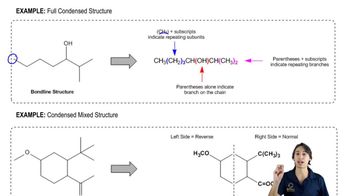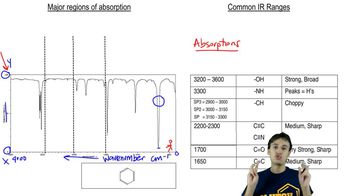Shown below is the 1H NMR spectrum of the alkyl bromide used to make the phosphonium ylide that reacts with a ketone in a Wittig reaction to form a compound with molecular formula C11H14. What product is obtained from the Wittig reaction?
<IMAGE>
 Verified step by step guidance
Verified step by step guidance Verified video answer for a similar problem:
Verified video answer for a similar problem:



 11:19m
11:19mMaster Building Molecular Sentences with a bite sized video explanation from Johnny
Start learning